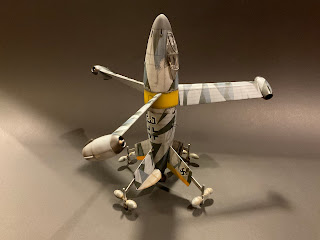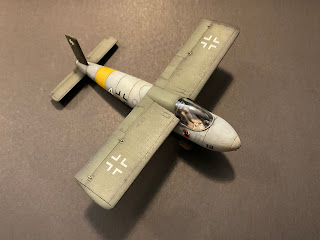German Project AUF E-100 by Amusing Hobby with the proposed extended Krupp Pak 44 128mm main gun. The original chassis was designed by Henschel & Son starting in 1943. The chassis was captured by the Allies in Hamburg, Germany and shipped to the UK at Lulworth Cove for testing by the British and later scrapped in the 1950’s.
I went “off-script” from the boxed model art and it’s shown here serving in the North African theater. It features barrel still in German dark gray/black lacquer sporting kill markings. This kit was modified by not installing the cover shielding as directed by the instructions and instead left open. I added numerous details including two side mounted crew stands, rear grab rail, front kit supplied electrical to forward light removed and replaced with brass tubing, re-scribed flame cuts, UV clear resin used for both optics systems and a few other various details as well.
Done in acrylics with the base being shot with Mr. Finishing Surfacer 1500 Black with an Iwata Eclipse HP-CS and details picked out in Tamiya custom mixes, AK panel liner (yeah, I’m getting lazy), and VMS and Ammo pigments as well.






















































